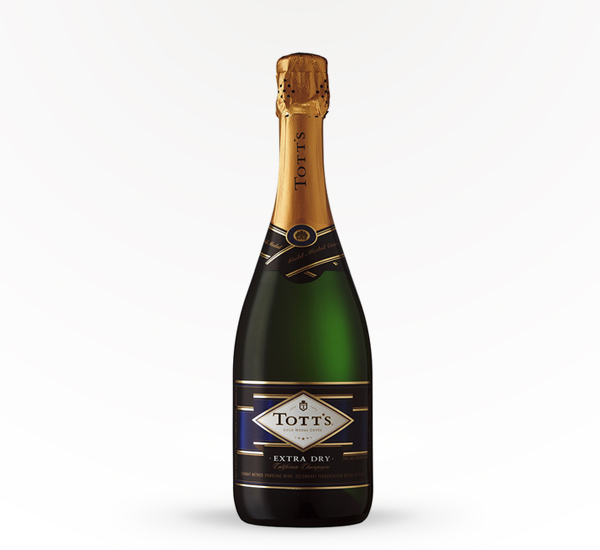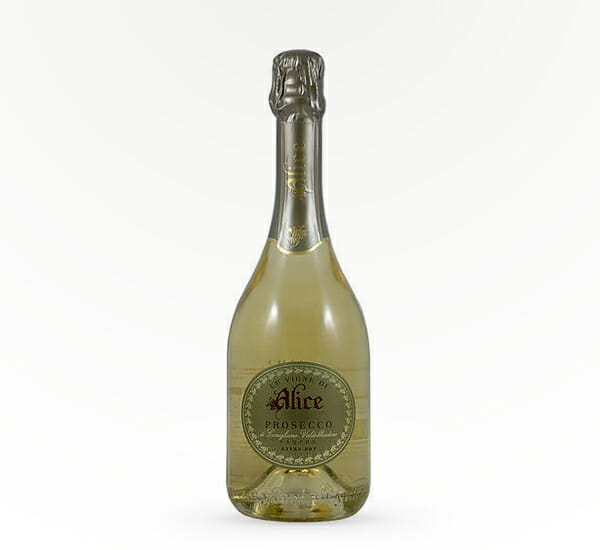Champagne and prosecco are some of the most prevalent styles of sparkling wine. In terms of flavor, aesthetic, and overall elegance, it is no surprise that these two wines are so popular.
These two drinks are commonly compared, too, since they’re both sparkling white wines and they’re commonly used for celebratory purposes.
For this reason, you might hear people call both of these wines “bubbly” rather than using their real names. This rich, fizzy aesthetic has pushed these two drinks into the forefront of luxury wines.
However, that’s where most of the similarities end between these two drinks. There’s really no way you can mistake a bottle of Champagne for prosecco once you know a little something about wine. From the places that these drinks are made to their production methods and prices, these two wines are very distinct.
Luckily, you don’t have to be a wine expert to be able to spot the differences. Keep reading below with Saucey to learn more.
Origins of champagne and prosecco
One of the biggest differentiators between these two wines is where they’re from. As suggested by the name, Champagne is produced in the Champagne region of France, which is located nearly 80 miles from Paris.
Champagne is made almost entirely of Chardonnay, Pinot Noir, and Pinot Meunier grapes. This wine must be made under specific guidelines under the Appellation d’Origine Controlée (AOC).
Meanwhile, prosecco is typically produced in Veneto, Italy, near Treviso, a town about 15 miles from Venice. The grapes used for this wine are known as Prosecco or Glera grapes.
The location really does play a role in the taste of the product. Champagne is produced in a more northern climate than Prosecco. As a result, Champagne grapes usually ripen with higher levels of acidity. In Veneto, though, the area fosters a unique microclimate that is much cooler than the area around it. The region receives a ton of rainfall every year, which helps produce crisp and flavorful grapes.
Both Champagne and Veneto have been recognized by UNESCO as World Heritage sites for their viticultural heritage. Specifically, Champagne’s hillsides, houses, and cellars around Reims and Epernay were recognized in 2015, while the region of Le Colline del Prosecco di Conegliano e Valdobbiadene was recognized, as well as the DOCG vineyard, were recognized in 2019.
How champagne and prosecco are made
Another huge difference between these two wines is how they’re made. Both have a fairly complex production process, and they result in completely different flavor profiles.
Champagne grapes are picked earlier in the season than most other grapes, which creates a tart taste in its base. The wine begins to develop its true texture and flavor when sugar and yeast are added. When these two elements are combined, the yeast consumes the sugar, releasing carbon dioxide that pressurizes into the container and carbonates the wine. This is what makes the wine bubbly.
When Champagne is fermented, the grapes are in close contact with the yeast. This method creates more autolytic flavors in the final product like bread, brioche, and toast. It also contributes to some citrusy, fruity notes.
Then, it’s time to age the wine. Champagne is aged using lees or riddling. Lees utilize dead yeast cells left behind in the bottle to mature the wine. Riddling is when a bottle of Champagne is rotated periodically to trap the dead yeast cells into the bottleneck.
Disgorgement comes next. The bottle’s neck is placed into liquid nitrogen or frozen brine to freeze the dead yeast cells during this process. When the cap is eventually popped, they’ll exit the bottle. Lastly, a dosage of wine and sugar is added to fill the bottle back to capacity.
On the other hand, prosecco uses much of the same production methods, except in the second fermentation process, it is placed inside a tank. The yeast is less involved in this fermenting process, which is quicker and more affordable than the traditional method. The final product of prosecco is much fruitier than Champagne. The Glera grape contains hints of pear, apple, honeysuckle, as well as floral notes.
Flavor profiles: champagne vs. prosecco
Since Champagne is made with such high pressure during the carbonation process, its texture contains fine bubbles. The specific taste and mouthfeel of your Champagne will depend on how it was made, but this strong, bubbly consistency should be found in any variation.
In younger Champagnes, you may notice some unusual cheese rind scents from your bottle induced by the wine’s lens-based aging process. Older, more mature Champagnes, however, carry more buttery, bread-like aromas. When it comes to taste, a fine Champagne may exhibit flavors of almond and nutmeg, blended with subtle hints of orange zest and white cherry.
But prosecco certainly holds its own. Prosecco carries some tantalizing fruit and flower aromas, egged on by its Glera grape base. You may notice notes of green apple, pears, banana cream, hazelnut, vanilla, honeydew, and fresh cream.
Prosecco is carbonated at a lighter pressure than Champagne, resulting in lighter, more frothy bubbles that pop in and out.
Food pairings with champagne and prosecco
These wines are known for their elegance, so it only makes sense to pair them with some exquisite food.
Champagne is dry and contains a high level of acidity, so it works best with rich, savory foods. Some foods that pair well for Champagne include shellfish, raw bar, pickled vegetables, and crispy fried appetizers like fried green beans or calamari. For a delicious and unexpected snack pairing, try sipping your Champagne with potato chips.
Prosecco can be matched with many of the same foods as Champagne, but it is better to lean more toward the sweeter dishes. Some foods that work well include cured meats like salami or pancetta and Asian cuisine like beef pad thai. For snack options, you can pair your prosecco with desserts like fruit salad or chocolate cake.
Champagne brands to try
Many factors go into choosing a quality Champagne or prosecco. The brand that makes it, the region it was produced in, and the drink’s reputation are all important aspects to consider before popping a bottle.
There are literally hundreds of different options out there. Fortunately for you, we’ve got a list of fool-proof recommendations for you to try.
One of the finest variations of Champagne is the Dom Pérignon Champagne, a vintage Champagne produced by the famous Champagne house, Moët & Chandon. This drink serves as the house’s premier style of Champagne. Expect to pay about $160 for this classic bottle.
 For a more affordable option, consider picking up a bottle of Tott’s Champagne. This crisp, dry Champagne carries hints of citrus, melon, and spice. It is a fairly sweet wine with low acidity at only 10.5% ABV. It is a quality bottle of wine for only about $15.
For a more affordable option, consider picking up a bottle of Tott’s Champagne. This crisp, dry Champagne carries hints of citrus, melon, and spice. It is a fairly sweet wine with low acidity at only 10.5% ABV. It is a quality bottle of wine for only about $15.
For those in search of the finest Champagne possible, the Louis Roederer Cristal Champagne may be the right choice for you. This bottle screams elegance. Simply the packaging of this stylish bottle will impress a crowd.
It contains notes of stoned fruits, crystallized citrus peel, fresh almonds, and sweet blossoms. Few other Champagnes offer a depth of flavor like this one.
Prosecco brands to try
Now, it’s time to talk about some proseccos. Mionetto Prosecco is a fruity dessert wine containing notes of fresh apple, apricot, and nectar. Grab this tasty wine for under $20.
 For a slightly pricier bottle, consider the Le Vigne De Alice Prosecco. For just under $30, you get a complex wine with a distinct floral scent and delicate fruit flavors that are sure to wow anyone lucky enough to sample it.
For a slightly pricier bottle, consider the Le Vigne De Alice Prosecco. For just under $30, you get a complex wine with a distinct floral scent and delicate fruit flavors that are sure to wow anyone lucky enough to sample it.
Champagne vs. prosecco
Whichever wine you choose between Champagne and prosecco, you’re in good hands. Both wines offer solid complexity in flavor, as well as sophistication in their presentations.
Who doesn’t enjoy some refreshing bubbly? Those soft, little bubbles tickling the back of your throat are one of the main appeals to drinking Champagne and prosecco.
With the centuries of lineage behind each of these drinks, it doesn’t appear that they’re going to be going anywhere any time soon. Champagne and prosecco are here to stay, whether you like it or not.
So why not get acclimated to these two classics? Pour up a glass of sparkling white wine today.



